Decentralized Reputation Explained: Odd-Point Dynamic Rating System
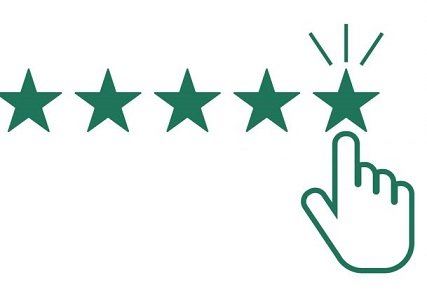
I've been talking about the need for a decentralized reputation system for 10 months.
https://steemit.com/steemit/@edicted/multiple-reputations-for-multiple-skills
https://steemit.com/utopian-io/@edicted/a-small-win-for-proof-of-reputation
https://steemit.com/reputation/@edicted/silk-road-dark-web-trusting-anonymous-sources-with-decentralized-reputation
I'm sure many of you don't believe that I could create such a system, impossible to game, that increases the value of the Steem blockchain by several factors. I hardly believe it myself if I'm being honest. However, I'll still give it a whirl.
This issue is the most profound problem in the entire cryptosphere. In fact, it's the biggest problem in the entire world. It's the reason why cryptocurrency was created in the first place. How do we figure out who to trust without putting in a massive amount of effort verifying people on an individual basis? POW, POS, and DPOS are primitive hard-coded solutions to the problem. I want more.
I purposefully pick a harder job at work that requires me to walk a lot so I can zone out and think about this stuff. This is how I am so easily able to pick up as much as 40,000 steps on @actifit on my alt account @smartasscards. I walk 50-80 miles a week at work. It's pretty nuts. I only work 18-25 hours a week. The rest of my time continues to be poured into crypto.
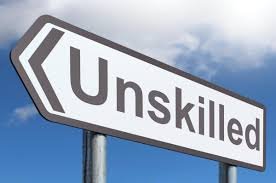
People are bad at rating things.
Have you ever read user reviews online? The average person is TERRIBLE at giving out reviews. Tell a person they can give something a one-star to five-star rating and they will mostly pick one-star or five-stars. The rating that should be given out the most is clearly 3-stars, and this is almost never the case.
Personally, I have never seen this happen, ever. You know what I have seen? Reviewers complain that they can't give zero stars on a 5 star system. LOL, laughable.
Pro tip: if you want to find the best information on a product, simply read the 3-star reviews. These reviewers are almost guaranteed to not be shills and to know what they are talking about.
3-stars is ironically the least picked rating. This creates an inverted-bell-curve that looks exactly the opposite as you'd like it to; with the most reviews at two extremes and hardly anyone picking the average.
Not only that, people who are good at giving reviews are often overlooked. If we are able to identify who is good at judging and who isn't, we will have created yet another proof-of-brain activity for the Steem community to partake in and get paid while doing it.
The information provided by reviews is extremely valuable. I recently listened to a podcast about how the Amazon review system gets gamed, and it is fascinating. These companies will pay you and even give you free product in exchange for a five star review. The difference in profit that they make is huge if they hit the number one spot. After a simple Google search, it's easy to see that dozens of reports have been done in reference to gaming buyer/seller reputation systems like this.
https://www.npr.org/sections/money/2018/06/27/623990036/episode-850-the-fake-review-hunter
This is a system that blockchain can change forever. We can be the pioneers of a new superior platform.
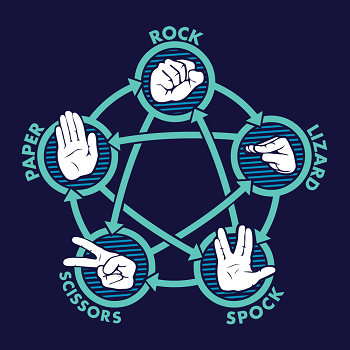
The power of odd numbers.
As is shown in the gaming mechanic: Five Point Combat, odd numbers can produce some ideal situations. In the game of Go, the board is a square grid with a length of an odd number. The most popular boards are 9x9, 13x13, and 19x19. This creates a middle point and always seems to have the effect of automatically breaking a tie game, not just for Go but anything you apply it to.
And so I want to apply this odd-point system into decentralized reputation. By using only odd numbers there will always be a middle point (50%); a perfectly average rating. There will be a minimum of three points and a maximum of 101 points.
Odd-Point Details
A three-point system has three options:
0, 1, 2
bad, average, good
0%, 50%, 100%
A five-point system has five options:
0, 1, 2, 3, 4
F, D, C, B, A
✪, ✪✪, ✪✪✪, ✪✪✪✪, ✪✪✪✪✪
0%, 25%, 50%, 75%, 100%
Eleven-point system:
0, 1, 2, 3, 4, 5, 6, 7, 8, 9, 10
' ', ☆, ★, ★☆, ★★, ★★☆, ★★★, ★★★☆, ★★★★, ★★★★☆, ★★★★★
0%, 10%, 20%, 30%, 40%, 50%, 60%, 70%, 80%, 90%, 100%
Fifteen-point rankings:
0, 1, 2, 3, 4, 5, 6, 7, 8, 9, 10, 11, 12, 13, 14
F-, F, F+, D-, D, D+, C-, C, C+, B-, B, B+, A-, A, A+
0%, 7%, 14%, 21%, 29%, 36%, 43%, 50%, 57%, 64%, 71%, 79%, 86%, 93%, 100%
101-points:
0% - 100%
Talking points
You'll notice that some of the models lend themselves to particular forms of already established judging. For example, the 15-point system is the only one that can accommodate A-F +/-. 15 points is a lot, but by breaking it up 5 ways with A-F and then multiplying by three by adding +/- it becomes a lot easier to navigate than just by using numbers 0-14.
The 5 point system is nice because it already exists all over the internet. Amazon, Newegg, Yelp, and many more all use a system with 5 stars as the maximum rating. 5 points can also be used grading from A-F. 5 points gives just enough accuracy to provide valuable information while at the same time being relatively simple. Unfortunately, even 5 options seems to be too many for the average person, which is why the 3 point system is probably the best for the masses.
Trying to add Even-points
Many people are familiar with ranking things on a scale of 1-10. If we try to add an even-point to the system it has no center (50%), which is annoying. With odd-points having that 50% anchor makes it much easier to correlate different ranks with each other. Also, if you use 1-10 then there is no 0%-9% range, and if you use 0-9 the percentages get thrown off (from 2/10 = 20% to 2/9 = 22.222%).
There is really no advantage in trying to include the even points to the system. There are more than enough options as it stands now. Going from 3 points to 101 points theoretically allows for 49 different ranking systems. However, many of those are pointless. Why would you ever use 79 points or literally anything above 51? For the vast majority of purposes 3 and 5 points will work just fine. 11 and 15 are for super try-hards that are really serious about judging things. After that usually the smartest move will be to jump straight to 101 to pick percentages by hand.

Relational
The nice thing about this system is that every version has a middle-point average rating (50%) and every system can be converted from itself into the 101-point percentages. By starting at 0, we retain the advantages of using odd numbers while at the same time taking advantage of even percentages divisible by 100.
I've personally been reviewing movies on the 15 point scale for years. I've never actually written down my reviews, but I know for a fact I give out way too many B+ grades. It would be nice to see them in a graph to see how good/bad my bell-curve distribution is.
Distributions
A very easy way to tell if someone is bad at reviewing things is if they have a lot of reviews and it isn't a bell-curve. It is very likely they don't know what they are doing in the case of an inversed bell-curve distribution.
Of course, this is not always the case. If I started ranking movies I'd probably give out very high ranks because the movies that I like are the ones I remember. I'm not going to remember to throw in some garbage D- movie that I watched a decade ago.
Downgrade
This system allows downgrading. If someone is using 15-point ranks and they aren't very good at it they (or anyone else) can downgrade those ranks into a more simplistic system. 15 is easily divisible by both 3 and 5, making these choices ideal candidates.
For example, say someone gave out five 'A-' ratings, ten 'C+' ratings, and seven 'F' ratings. Anyone could downgrade this into 7 bad, 10 neutral, and 5 good. This is a much better distribution than before.
Easy to Learn, Hard to Master
As I have already pointed out, most people are bad at reviewing things. Users will be encouraged by default to start at the three point system and work their way up. By starting at something simple and working up to more complex reviews we can prevent the dreaded inverse bell-curve.
Dynamic Scaling
Why is it important that all odd-points are valid in the system if most of them aren't going to get used? That's where dynamic scaling comes in. All accounts start at three points, but if we upgrade or downgrade out of bounds the dynamic scaling system will automatically bump us up to the next level.
Dynamic Scaling Example (Steem Rankings)
Ranking people on Steem will be a little different than shown above because it will use this dynamic system. We start at three points (0, 1, 2) but I'll portray those three options as:
- Level -1
- Level 0
- Level 1
This is just one possible representation. There will be many options.
Let's say the way you've set it up is that everyone that follows you gets put into level 0, and everyone you follow get's put into level 1. Users only get placed into level -1 if you have a bad experience and put them there by hand.
What happens if you promote someone from Level 1 to Level 2? You get bumped up to the next system.
- Level -2
- Level -1
- Level 0
- Level 1
- Level 2
What happens if you demote an exploitative whale to Level -3? You get bumped to the next system (7 points)
- Level -3
- Level -2
- Level -1
- Level 0
- Level 1
- Level 2
- Level 3
And so on and so on. With the dynamic system, any of the odd points can be utilized depending on the user's opinion.
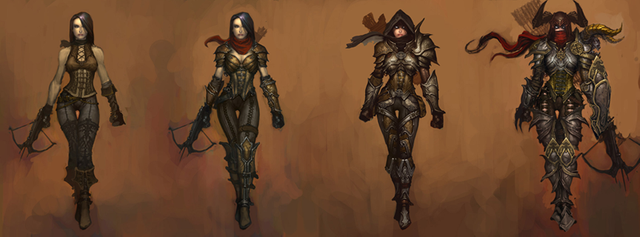
Who Cares? What's the Point?
Now, imagine that I connect this reputation system to the Steem Stake Sterilizer. Now you can start viewing the blockchain in a custom way that no one else can. You can add rules to Level 1 that say, "I want all comments from level 1 users to be worth 25 cents more." "I want all upvotes given by Level -3 to count for 90% less." "I want all blog posts submitted by Level 2's to count +$1 and then x2."
It's not hard to see how powerful this system can become. All of us can start viewing the blockchain in a radically different way. We can blacklist all the vote sellers, scammers, and exploitative whales. We can whitelist all the struggling plankton that are trying as hard as they can to make a name for themselves. We can tell the system to count a -1% flag for -1000%. Most importantly of all, we can share these reputations directly on the blockchain, and anyone who trusts us can collate the information into their own ranking system.
Network Effect
The more people use the system, the more powerful it becomes. However, this functionality is still extremely powerful on its own. This ensures that the product will still get used in its infancy, but the chance of going viral increases exponentially over time due to the added benefit of more users.
Deviate Extrapolation
The first deviation occurs when you trust a certain group or person. By temporarily trusting someone else's judgement, we can gain the benefit of all their judgments without having to do any of the work.
The second deviation occurs when you trust a person that's trusted by a person that you trust. And so on and so on the network branches out. I was on an alliteration kick when I was thinking of this stuff. I came up with names like Steem Stake Sterilizer, Reputation Radar (Rep Radar), and Reputation Referral Ring. The names aren't important, it's what they represent.
Reputation Radar
This would be a visual representation of the network. Who you trust would be shown, and who they trust would be shown. Users that trust you would also be displayed. Large referral rings could also be identified. The logistics of such a feat might get complicated.
Reputation Referral Ring
Better known as "circle jerking", a clique of individuals that all rank each other highly would qualify as a Referral Ring. It's only a bad thing if the reputations awarded are not deserved. It's certainly something to look out for.
I imagine that this system will have a polarizing effect on the community. Lines will be drawn. The more polarizing (two sides) the better. This would imply that one side is to be trusted and the other is a bunch of scammers and exploiters. This would be the best case scenario to easily identify all the bad actors. More than likely there will be many more factions than that. Such is decentralization.
Extremely Sybil-Attack resistant
Imagine creating 1000 bot accounts that all rank each other highly. Will this have an effect on the network? No. This system is totally decentralized. No one trusts any of the bot accounts except for the bots. No one has any reason to trust this Referral Ring. Anyone who does trust this ring would likely lose reputation in the eyes of accounts that are paying attention.
Pruning
Imagine someone you trust ranks a user or ring highly that you know is not to be trusted. You still trust the original user, so there will be an option to prune these reputations from the tree. Pruning can be automatic or done by hand given the situation.
Decentralized
It's hard to wrap one's brain around how this system has value. Literally anyone can give any rank to any user for any reason they see fit. How could this subjective system possibly yield useful results?
What gives a user a high reputation? Many other users giving that user a high reputation. However, those high marks mean nothing without trust. If I give high marks to @fulltimegeek, @greer184, @krnel, and @taskmaster4450, those high marks mean nothing unless other users actually trust me. And their trust doesn't matter much unless other users trust them, and so on. This is what makes the system decentralized and very hard to game. Earning trust is not easy. Losing trust, on the other hand, is quite easy.
If someone manages to be trusted by the vast majority of the community, consensus has been reached and that user is beyond reproach.
Visually, the Reputation Radar looks like an hourglass. At the middle of the radar is you. The system is bottlenecked here. You are the center of your own universe. The cone (radar) in front of you are the users you trust, and the users they trust, and so on. The cone behind you includes the users that trust you, and the users that trust them, and so on. The deeper the cone is behind you, the more trustworthy you are, which in turn gives even more weight to the users you trust.
Simplicity
This uncomplicated system is extremely powerful. It's totally subjective. Some people will trust you, and some will not. Users can make good bets on who to trust in the future given on who they trust now. After having the experience of personal interaction they can make any changes they see fit and start the extrapolation process all over again. These shifting sands will allow the righteous to ascend the ranks quickly while burying the wicked in an instant.
Keeping Reviewers Honest: Personal Reputation
One reason why review systems fall flat on their face is that the reviewer has nothing to lose by being bad at their job. I talked about this at great length in my post about the Silk-Road and the decentralization system used by it.
The only way to create a superior system is to have a 100% free market. This means that everyone must be a producer and everyone must be a consumer. Currently, reputation systems have a seller (someone you need to trust) and a buyer (someone who awards trust to sellers). This is all about to change. Everyone on Steem will have a reputation, and if you are a bad actor your actions will receive the wrath of instant Karma.
How do you stop the seller from pretending to be a buyer? The answer is this system. Users now have something to lose by bearing false witness. Sellouts and scammers will be ejected from the system quite quickly even if they spent a long time building their image up. Our reputations will change on the subjective whims of public opinion. This is how reputation has always operated, regardless of its shortcomings. It's time for blockchain to tap in.
Conclusion
I truly believe that this reputation system can completely revolutionize the Steem blockchain, and perhaps other platforms as well. I was going to work on it in secret out of fear that someone would "steal my idea", but those are the actions of a person living in scarcity. No one is listening anyway :D
This is my vision and cannot be copied by another person. I will link every dapp I ever create to this system of reputation and make it even stronger than it was before.
- Content Filter
- Decentralized Exchange
- Video games
- Proof-Of-Brain governance
- Curation application
- Lottery/Poker/Gambling operations
They will all connect to this system for a synergizing effect.
Obviously, I have a lot on my plate.

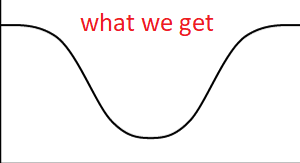

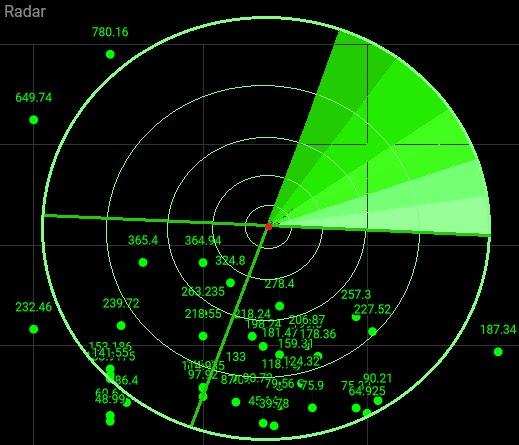
Just wow!
I have to read your whole article again but what I've seen looks very interesting!
100% Upvote and a new follower :)
Posted using Partiko Android
Steemhunt needs this badly. I don't wan't to say that most of the reviews I'm reading are garbage, but fuck it, most of the reviews are garbage.
Haha I haven't looked at it yet, but yeah I would hope it connects to many dapps instead of just the ones I make.
Just now while discussing the left/right political spectrum with somebody on facebook. I'm wondering now if most people are even capable of rating things on a linear scale.
This is something that I've taken for granted for my entire life because i'm able to do so, but when i take into account how many people fail to understand
I now wondering if they're actually capable of it at all. Similar to how only a certain percentage of the population is able understand node based programming
Can 3 options really be too many? The answer is: yes :D
Seriously though I think people would get a lot better if they were being paid and if they had something to lose when they did a bad job.
I think that these thoughts are forward for sure in that they improve the current pay for your reputation style we’ve got going on here. I don’t think Ned will want to deviate from this though, he likes control of his platform despite its decentralization nature.
I do like the concept though, perhaps doing it on one of the apps associated with the platform for testing would then lead to its adoption.
Ah, that's the beauty of it. It doesn't matter what ned or anyone else thinks. I'm going to create these things and users can choose to use them or not. I don't need permission.
I hope that the merits of my ideas stand alone and I don't need the support of whales to gain popularity. Having that support is just icing on the cake. I'm the type of guy that scrapes frosting off the cake into the trash because it's too rich.
That's great then, I look forward to seeing it develop I know you've been talking about it for quite a while. Sign me up for testing!
Ok I'm on board, I can do graphics and basic programing (flash action script), but graphic wise I can do anything from scratch from vector art/pixel art and interference to 3D modeling and anything in between.
Posted using Partiko Android
Nice to read fresh look to improve Steemit system, it gives me hope that this platform will stay here for years and not be overtaken or eaten alive by newly launched other blockchain based social media platform especially those coming from EOS.
Congratulations @edicted! You have completed the following achievement on the Steem blockchain and have been rewarded with new badge(s) :
Click on the badge to view your Board of Honor.
If you no longer want to receive notifications, reply to this comment with the word
STOPDo not miss the last post from @steemitboard:
Congratulations! Your post has been selected as a daily Steemit truffle! It is listed on rank 8 of all contributions awarded today. You can find the TOP DAILY TRUFFLE PICKS HERE.
I upvoted your contribution because to my mind your post is at least 13 SBD worth and should receive 164 votes. It's now up to the lovely Steemit community to make this come true.
I am
TrufflePig, an Artificial Intelligence Bot that helps minnows and content curators using Machine Learning. If you are curious how I select content, you can find an explanation here!Have a nice day and sincerely yours,

TrufflePigWe could use your system on whaleshares.io would you consider adding it to that steem blockchain fork?